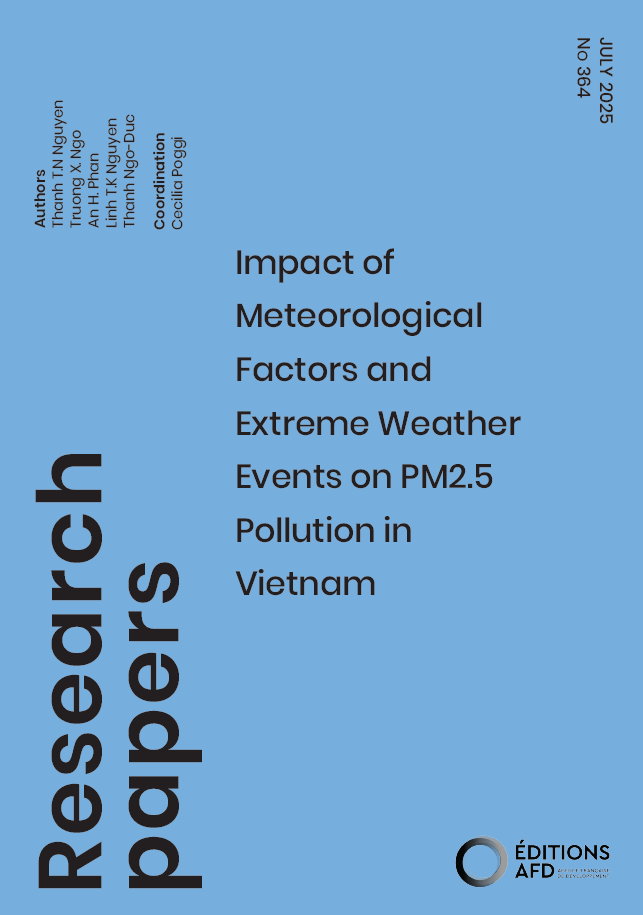Share the page
Impact of Meteorological Factors and Extreme Weather Events on PM2.5 Pollution in Vietnam
Published on

This study examines how meteorological factors and extreme weather influence PM2.5 pollution across six socio-economic regions in Vietnam from 2012 to 2020. Univariate and multivariate analyses, including correlation analyses, Linear Regression, and Generalized Additive Models are used to quantify the independent and the combined effects of meteorological factors on PM2.5 fluctuations. The study identifies extreme weather events and uses overlap ratio along with Two-Way Fixed Effect model to analyze and assess their causal impact on PM2.5 levels. Two specific cases (drought and typhoon) are quantified using a Difference-in-Differences model. Results show that meteorology strongly affects regional PM2.5 variations, with rainfall and wind speed impact the South immediately, while temperature and humidity influence longer-term concentrations mainly in the North; surface pressure and temperature have strongest impact. Together, they explain up to 54% of PM2.5 variability in the North but less in the South, indicating additional pollution sources beyond meteorology. Extreme weather impacts PM₂.₅ levels regionally, varying by event type, duration. Cool days, heavy rain, and high humidity reduce pollution, while cool nights, low humidity, low wind speed increase it. A notable spike of 14.2 µg/m³ occurred during prolonged cool nights in the Red River Delta, near the WHO's 10 µg/m³ limit for 24-hour exposure
Useful Information
-
Authors
-
Thanh T.N Nguyen, Truong X. Ngo, An H. Phan, Linh T.K Nguyen,Thanh Ngo-Duc
-
Coordinators
-
Edition
-
364
-
Page number
-
51
-
ISSN
-
2492 - 2846
-
Collection
-
Research Papers
-
Languages
-
English
